Growing Hydrangeas - Hydrangea Care Guide


Hydrangeas are some of the more beautiful garden shrubs, exhibiting big billowy blooms that come in various shades of pink, blue, purple, white and even green. With the proper growing conditions and care for hydrangeas, they can be grown in a wide range of regions. Hydrangea plants do have a few specific requirements that will keep them healthy and blooming year after year.
Here is our one-stop shop for all things hydrangea care, with easy-to-understand info on hydrangea types, hydrangea growing conditions, hydrangea blooming, and more. Sprinkled without are helpful quotes and in-depth videos from our in-house hydrangea expert Amy Draiss.
Quick Facts about Hydrangeas:
- Botanical name: Hydrangea Hydrangeaceae
- Height: 3 - 20+ feet (0.9 - 24 m)
- Spread: 3 - 10 feet (0.9 - 3 m)
- Sun exposure: Full to partial sun, some shade
- Soil requirements: pH 5.5 - 6.5
- Hardiness zones: 3 - 9
- When to plant: Spring or fall
The word hydrangea is derived from the Greek words “hydro,” which translates to water, and “angeion” which in Greek means vessel or receptacle. It may be that the shape of the seed is similar to an urn, but the word also implies a plant that’s a voracious consumer of water.
The hydrangea bush is native to several Asian countries, including Japan, China and Korea, but it was also discovered to have possibly existed in North America 40-65 million years ago based on fossil records. An early American colonist is said to have transported a North American varietal to England in the 1730s.
Hydrangea Flower Varieties
There are around 75 species within the hydrangeaceae family, and each has unique characteristics. The best known are Mophead, Oakleaf, Smooth, Panicle and Climbing.
Macrophylla
Among the Hydrangea macrophylla species, one of the most commonly seen varieties is referred to as Hortensia and Lacecap, but you may also see them called Mop-head, Big Leaf, French Hydrangea, and Snowball plant.
Hortensia, or French hydrangea, is the mophead that produces large rounded flower clusters and blooms each summer. The heavy masses of flowers are not fertile and have nothing to offer insects except to notify them that there is food nearby. There is no reproductive mechanism within the flower. Mophead hydrangeas can be grown in cooler regions in full sun, and need heat protection in areas of hot summers.
Gardening tips, videos, info and more delivered right to your inbox!
Sign up for the Gardening Know How newsletter today and receive a free download of our most popular eBook "How to Grow Delicious Tomatoes."
Lacecap
Lacecap hydrangea flowers are not as showy but, as their name suggests, are more delicate and lacey looking. Their larger sterile flowers form a ring around their center comprised of small, delicate fertile blossoms.
Other common subspecies are also popular in various settings:
Oakleaf
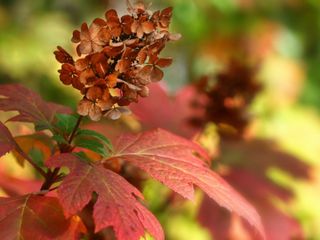
Like an oak tree, the Oakleaf Hydrangea (Hydrangea quercifolia) has lobed leaves that turn to bronze in the fall. They withstand the cold and tolerate drought well. They’re native in the southeast regions of the U.S. and produce a large white panicle shaped flower in spring and summer.
Smooth
Sometimes referred to as “wild” hydrangea, the smooth hydrangea (Hydrangea arborescence) is deciduous, with fertile flowers that bloom in June. The flowers start out green and change to white but, unlike other varieties, the color cannot be changed by increasing acid in the soil. Its leaves are oval shaped.
Panicle, or PeeGee
The deciduous panicle hydrangea (Hydrangea paniculata) can grow into a very large shrub or even be grafted into a tree form, sometimes reaching up to 25 feet (7.6 m), so plan ahead before planting one. The panicle hydrangea's 5-inch (12. cm) leaves turn orange or red shades in the fall, and its white summer flowers also change color in autumn, often to pink or red.
Climbing
Climbing hydrangea (Hydrangea anomala subsp. petiolaris) is also deciduous, and can climb 30 to 80 feet (9-24 m) on a strong support structure. Its leaves are heart-shaped. With fertile, fragrant flowers that produce seed pods, the plant’s aerial rootlets and twining vines help it grow as a vine, or it can be trimmed to shrub size.
Helpful Hints on Hydrangea Care
While there are many different varieties of hydrangea, their survival needs are fairly similar. Hydrangeas love rich, well-draining soil, but they are thirsty plants and do require regular watering. Most types love afternoon shade in the summer, especially in hot climates. Map out your garden space before deciding where to plant a hydrangea. They welcome sunshine, but they appreciate a bit of coolness and heat protection, as well. If you live in a cold region, be prepared to provide winter hydrangea protection, if only just covering it with a frost blanket.
Plan ahead before installing a hydrangea bush, taking into consideration their sun, soil and water requirements. Planted in the right growing conditions, they will last and return year after year.
Can Hydrangeas Grow in Full Hot Sun?
Hydrangeas generally enjoy partial shade and protection from intense heat. However, there are a few heat tolerant hydrangeas that can thrive in some hot sun.
There probably isn’t a hydrangea type that could be called drought-tolerant. Some of our favorite Macrophylla types with their billowy blooms are native to coastal areas of Japan and do best in a cooler climate.
Plants stay cool by drawing water up from their roots. In hot weather this occurs rapidly, and hydrangea flowers and leaves can quickly suffer from soil evaporation. The best practice for hydrangeas in hot weather is to use a soaker hose or drip system around the plant base.
Here are some hydrangea varieties that stand up to heat better than others:
- Oakleaf hydrangeas are more hardy and heat tolerant than some. Although not entirely drought tolerant, oakleaf hydrangea shrubs are the best. The plant will still need plenty of moisture during hot, dry weather.
- Panicle is one of the more sun tolerant hydrangeas, requiring five to six hours of sunlight. This one definitely doesn’t want to be in full shade, but it does appreciate some shade protection in the afternoon. Morning sun exposure works best.
- Since Smooth hydrangea is native to the eastern United States as far south as Louisiana and Florida, it’s accustomed to warmer climates.
- Lacecap and mophead can tolerate some heat, although the showy mophead likes more shade.
Planting - Where is the Best Place to Plant a Hydrangea?

Ideal sun, water and shade are extremely important to hydrangeas. But soil is also a primary consideration for raising them to grow as healthy as possible. Above all, the soil you choose for a hydrangea’s home must be well-draining. Hydrangeas need plenty of water, but will react negatively if their roots sit in water or become soggy.
Optimal Soil Conditions
Hydrangeas grow best in rich, loamy soil. If the soil is acidic it can absorb aluminum and produce beautiful blue blossoms. With less acidity, blossoms will generally be pink or whitish.
It’s a great idea to get your soil tested before installing a hydrangea plant. Your local extension service is there to help with this. If you're hoping for blue hydrangea flowers and your soil tests more alkaline, you can amend it with aluminum sulfate or coffee grounds. If your soil test shows too much acid, you can amend it with garden lime.
Watering - What is the Best Way to Water a Hydrangea?
Drip irrigation is probably the most effective way of watering hydrangeas. Always water from the base - never use a sprinkler or overhead watering system. Again, well-draining soil is key, and just remember to keep the hydrangea’s soil moist, not slushy. Signs of overwatering can mimic signs of underwatering - the leaves may droop or turn brown and crunchy on the tips. If your hydrangea's leaves appear droopy, it is either thirsty or its cells are waterlogged. It’s crucial to find a balance by noticing the plant’s behavior and checking on environmental conditions.
Fertilizing - What's the Best Hydrangea Fertilizer?
While established hydrangeas don’t always need regular feeding, newly planted hydrangeas initially love a rich helping of organic compost. After they’re established, you can feed your hydrangeas just a few times each year, preferably in early spring and early fall.
In spring, once you see buds forming, watch for center leaves that might appear yellow. This is the plant’s sign that it needs to be fed. Our resident hydrangea expert Amy Draiss reminds us to “Apply the season’s first dose of fertilizer once new growth begins to emerge in spring. A general, all-purpose fertilizer or a product specific to acid-loving plants would be beneficial to your hydrangeas. Following the instructions on the packaging, broadcast the fertilizer evenly along the drip edge of the plant then water in completely. “
There are some great specifically designed hydrangea fertilizers available at your local garden center. A good all-purpose 12-4-8 or a balanced 10-10-10 formula will provide all the fertilization they need. If you want your flowers to be blue or purple, use a fertilizer low in phosphate.
Pruning - Should I Cut Down My Hydrangea For Winter?
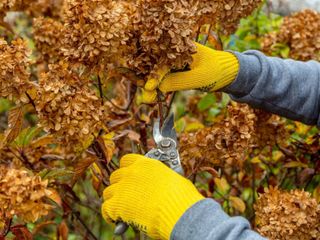
Amy also explains that it’s important to understand how hydrangeas bloom: Some types of hydrangeas form buds on “old” wood, meaning the flower buds are produced the prior season and last through the winter, blooming in spring or summer. And conversely, some types form blossoms on the “new” wood in the springtime.
Panicle (aka PeeGees) and smooth varieties of hydrangea bloom only on new wood, while oakleaf types bloom strictly on old wood. The most common types, the mopheads, often bloom on both. Fall pruning should be done judiciously on plants that bloom on new wood, and not pruned at all in the fall on those that bloom on old wood.
You can deadhead hydrangea flowers right after they fade, but it’s not necessary. If your hydrangea type is one that blooms on old wood, the buds have already formed on branches during the previous summer; if those branches are pruned away in fall or early spring, you won’t see flowers in the spring.
Pruning New Wood Hydrangeas
If your plant blooms only on new wood, you won’t see new buds forming until springtime. It’s safe to prune this type back in the fall. If you want fuller and healthier hydrangea shrubs, both panicle (Hydrangea paniculata) and smooth (Hydrangea arborescens) types should be pruned in early spring, cutting just above a pair of buds.
Panicle types can be cut back up to one-third or one-half of their total growth. It’s safe to prune smooth varieties down to just one foot above the ground! Amy reminds us, “These types are quite suitable for colder climates where there is no chance of the flowers’ buds being harmed over the winter as they simply do not exist yet.” These will overwinter without protection unless the temperatures drop below negative 30 degrees F (-34 C). So for those that bloom on new growth it’s safe to leave the plant unpruned through the winter. Again, oakleaf and mophead types do not require pruning during the spring months.
Pruning Old Wood Hydrangeas
Other hydrangea varieties, including the popular big leaf, form flower buds during the previous growing season, or on “old” wood. Again, these young buds need to survive the winter if they’re going to bloom when the weather warms up. Low temperatures and wind can lead to hydrangea winter kill. To prevent winter kill, protect these plants and their nascent buds from the elements. As fall approaches, laying mulch over their root area is helpful. If you live in a region where winter cold becomes extreme, our experts advise building a wire cage around the plant and wrap it with burlap or insulation cloth. Be sure to water the plant well just before the ground freezes.
The Oakleaf variety is not as susceptible to winter kill. These ultra hardy plants will bloom consistently each and every year. Because they bloom on old wood, we do not recommend pruning hydrangeas in this group.
Hydrangea Flowers - Bloom Times and Color Changes

Bloom Times
When will blooms appear? Bloom times for hydrangeas differ with the variety, the soil, the weather and the region in which they’re growing, among other things. The majority will bloom in mid-spring through late summer and early fall, but there are some beautiful varieties of hydrangeas that bloom in autumn.
Hydrangeas planted in warmer climates bloom earlier and longer than those in colder climates. Climbing hydrangeas bloom from late spring until midsummer, and the lovely oakleaf varieties bloom from early summer in southern regions, and from midsummer to early fall in the Midwest and northern states. It’s a great idea to talk with your local garden center or contact an extension service in your area to get a sense of when exactly your hydrangeas are likely to bloom.
Colors
Hydrangea flowers are stunning, but soil conditions can affect and change their colors. Apply the correct amendment, depending on your desired flower color, early in the spring right after new growth has emerged. You can repeat with a second application 1-2 months later.
The flower colors on mophead (Hydrangea macrophylla) and lacecap (Hydrangea serrata) types of hydrangeas can be altered as follows:
- To change pink flowers: Adding aluminum sulfate as an acidifier will turn pink flowers to a blue or more purple hue, and it will darken blue hydrangeas to a deeper purple hue.
- To change blue flowers: Adding lime to the soil will lighten your blue hydrangea flowers to a pinkish hue.
And of course, there are those of us who love the green variety! Just as beautiful, some just start out green and some are bred to stay that way. It’s fun to experiment with your hydrangeas’ soil conditions and make some magic.
Containers - Can You Grow Hydrangeas in Pots?
Hydrangeas certainly can be grown in containers and even as houseplants, but be prepared to give them some attention and plenty of TLC.
Gift hydrangeas are often short-lived, especially if they’ve been forced to bloom for the sake of retail. Nursery grown plants tend to be healthier and have more longevity. We recommend choosing a smaller plant, such as a dwarf variety, for growing containerized hydrangeas, especially if you plan to grow them indoors.
Potted Outdoor Hydrangeas
An outdoor potted hydrangea loves some morning sun, and thrives in afternoon shade. It’s a great idea to place your potted plants on rolling stands so you can adjust their exposure as needed.
Amy suggests planting your new hydrangea in a pot that’s several inches (7-8 cm) wider in diameter than the one it came in. Make sure it has plenty of drainage holes. Leave about three inches (7.6 cm) of space between the surface of the potting mix and the rim of the pot.
Water your container grown hydrangea plants by filling the pot to the brim with water, letting it drain, and repeat.
Hydrangeas as Houseplants
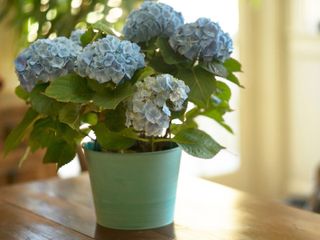
Hydrangeas can make lovely houseplants. However, consider their native habitats - they enjoy sunshine, shade, moisture and a cool environment. Be sure to place them away from heater vents and drafts and, if you keep the interior of your home warm, consider keeping your hydrangea in an unheated room.
It’s best to consider watering potted hydrangea houseplants with rainwater or distilled water rather than tap water, which is often chlorinated or contains other chemicals.
When your plant is blooming indoors, be sure to keep the soil moist but do not overwater or allow the plant to sit in water. Be sure to use pots with plenty of drainage holes and well- draining potting soil. You can decrease the amount of water after the plant blooms, but never let the soil become dry. Hydrangeas will not thrive indoors in a dry, warm environment. They need to live in temperatures between 50 and 60 degrees F (10-16 C). Growing these plants indoors may require a humidifier or a pebble tray to keep the surrounding air moist.
Fertilize the plant every week while it’s blooming. Our experts advise using a water soluble fertilizer diluted to half-strength. After the plant has bloomed, only feed it once each month. As with outdoor potted hydrangeas, it’s best to let the dormant plant overwinter in a space that’s around 45 degrees F (7 C), watering only lightly and intermittently throughout the season.
Hydrangea Problems, Pests and Diseases
If your hydrangea is not flowering and you know you’ve identified and pruned it properly, it’s a good idea to get your soil tested. Too much nitrogen in the soil will result in lots of beautiful greenery and no flowers, so add some phosphorus, perhaps by digging in some bone meal. Your local garden center will have suggestions on the best fertilizers for hydrangeas, as well.
Root rot is a common occurrence when a hydrangea’s soil stays too wet, and often occurs in early spring before the rains subside. A sign of this is droopy leaves and eventually a grayish mildew. Good drainage, whether in the ground or in containers, is crucial to preventing this problem.
Hydrangeas can be visited by a number of pests, including assorted aphids, beetles, hydrangea cane borer and caterpillars. The best treatment is to watch for these invaders and remove them by hand, dropping them into soapy water. Apply neem oil or insecticidal soap rather than using chemical controls.
While relatively disease free, there are a few common hydrangea diseases, such as powdery mildew, rust, ringspot virus and botrytis blight. Each of these can cause serious damage to the plant, however it is mostly cosmetic in nature. Be sure your plant is pruned well enough to allow air to pass among its branches. Check for the plant’s sunlight conditions – too much shade can contribute to diseases. Trimming away affected leaves, spraying off the leaves with water and removing any detritus around the plant can be helpful.

Caroline Bloomfield is Manager of Marketing Communications at Gardening Know How since 2019. A northwest native, she has resided and gardened in multiple zones in the U.S. and is currently at home in Eugene, Oregon. Writing and editing for various publications since 1998, her BA in American Studies from Southern Maine University includes an emphasis in English. She was raised in California by avid gardeners and continues to enjoy the natural world with an appreciation for the concepts of sustainability and organic care for the planet.
-
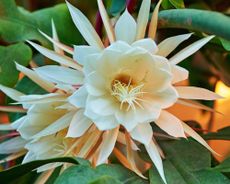 5 Night-Blooming Houseplants – Grow An Indoor Moon Garden
5 Night-Blooming Houseplants – Grow An Indoor Moon GardenThere is something uniquely special about night-blooming houseplants. Set the scene for a magical evening indoors with these fragrant flowering beauties.
By Amy Grant
-
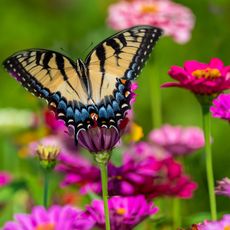 Beautiful Butterfly Garden Ideas: 10 Ways To Attract Pretty Pollinators To Your Yard
Beautiful Butterfly Garden Ideas: 10 Ways To Attract Pretty Pollinators To Your YardBringing butterflies to your backyard is one of the most important ways you can enhance wildlife, boost pollination and improve biodiversity. These 10 butterfly garden ideas can get you started
By Mary Ellen Ellis
-
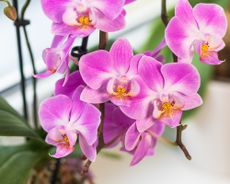 Orchid Care: How To Grow Happy, Healthy Plants Indoors
Orchid Care: How To Grow Happy, Healthy Plants IndoorsGrowing orchids as houseplants is such a rewarding hobby. Learn their unique care needs to keep plants thriving and bursting with flowers.
By Melanie Griffiths
-
 What to Plant After Spring Bulbs Have Died Back – 8 Stunning Ideas
What to Plant After Spring Bulbs Have Died Back – 8 Stunning IdeasWhen spring bulbs die back they leave unwelcome gaps and fading foliage in their wake. But with some clever planting choices, this can be concealed. Discover the best options to take their place for beautiful beds all season long.
By Mary Ellen Ellis
-
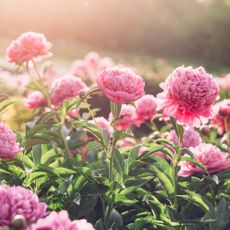 It’s Official! This Classic Cottage Garden Favorite Is The 2024 Flower Of The Year
It’s Official! This Classic Cottage Garden Favorite Is The 2024 Flower Of The YearThe 2024 Flower of the Year is a long-time garden favorite. Here’s why you will see peonies everywhere this year–and why you should add one to your garden.
By Laura Walters
-
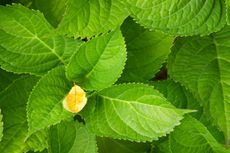 How To Get Hydrangeas To Bloom
How To Get Hydrangeas To BloomWhen your favorite hydrangea is not flowering, check out a list of what it requires and make some changes that will make it happy again.
By Caroline Bloomfield
-
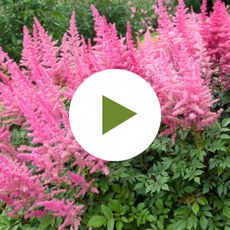 Best Underrated Plants: Forgotten Plants That Deserve A Second Look
Best Underrated Plants: Forgotten Plants That Deserve A Second LookWe all love a showstopper, but there are plenty of unsung garden heroes that can elevate the vitality of your plot. We round up eight underrated plants you need to grow this year
By Bonnie Grant
-
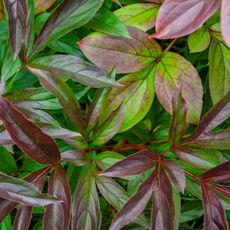 Fall Peony Care: Tips & Tricks For Big Blooms Next Spring
Fall Peony Care: Tips & Tricks For Big Blooms Next SpringFall peony care involves cutting the plants back, disposing of dead leaves, division and perhaps some mulching.
By Tonya Barnett
-
 Why Are There Ants On My Peonies? Uncovering The Truth Behind This Perennial Mystery
Why Are There Ants On My Peonies? Uncovering The Truth Behind This Perennial MysteryGardeners love peonies and so do ants. But what do ants on peonies mean? We uncover the truth behind the perennial myth that peonies need ants to bloom.
By Tonya Barnett
-
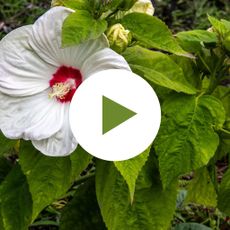 5 Things To Know About Rose Mallow
5 Things To Know About Rose MallowLooking to grow Hibiscus moscheutos, also known as rose mallow? Here are five essential care tips you need to know.
By Amy Draiss